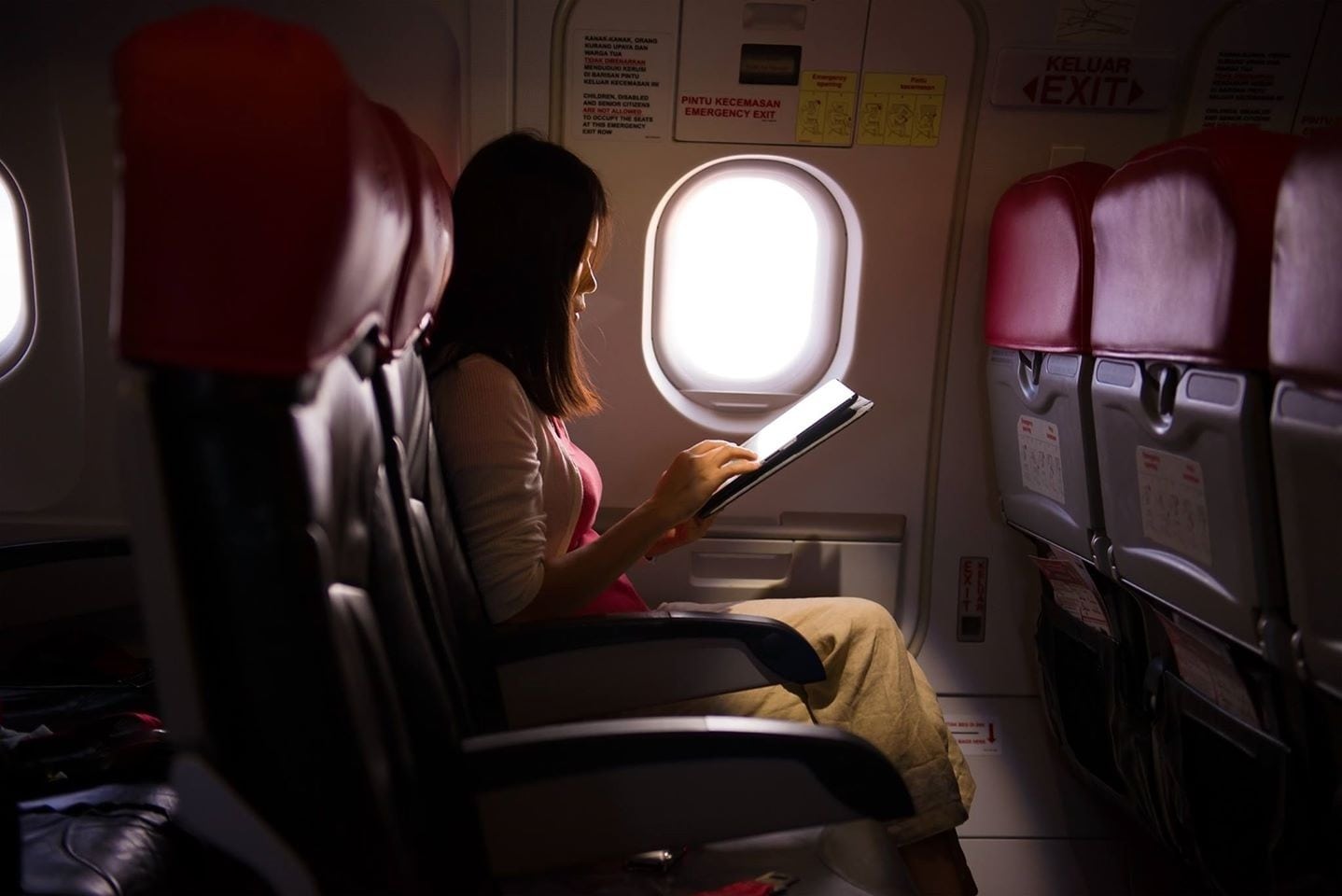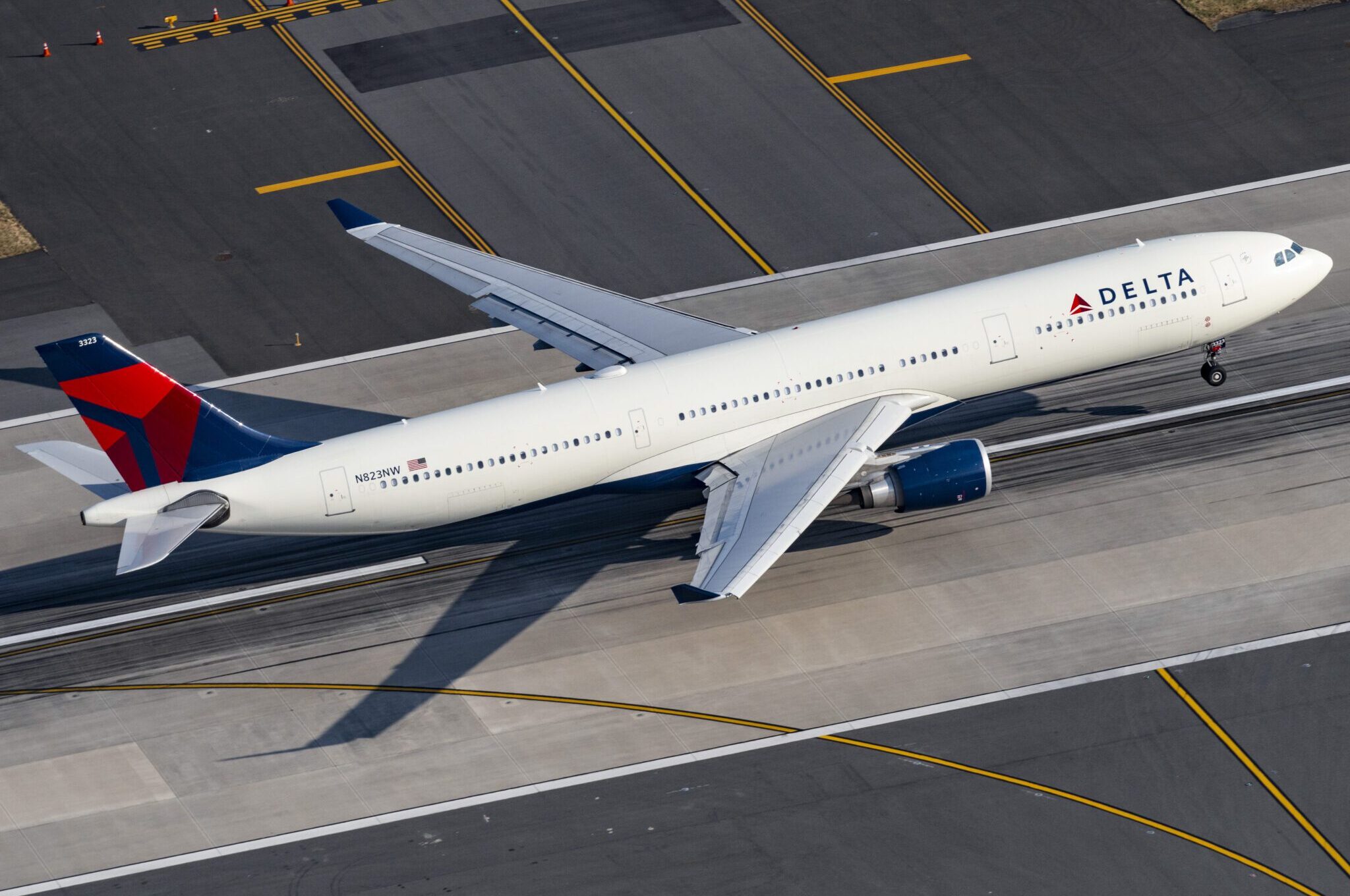How AT&T Plans to Beat Gogo at the In-Flight Wi-Fi Game

Skift Take
This week AT&T announced that it was getting into the airplane Wi-Fi business, much to the chagrin of market leader Gogo, which saw its stock plunge on the news.
AT&T is turning to Honeywell to outfit aircraft with antennae that will reach 4G speeds from land-based towers. For greater understanding of just how it will make that happen, we talked with Jack Jacobs, Vice President, Safety and Information Management Systems for Honeywell, who told us a great deal -- some of it between the lines.
AT&T's launch partners were not announced, but Jacob's allusions to Dallas, as well as a Honeywell survey that looked at habits of flyers in Singapore and London, give us insight on which airlines they may be.
The New Antenna
When we asked about far more tangible things, like the new antenna which will power the AT&T/Honeywell Wi-Fi service, Jacobs confirmed that they will be relatively flat, no more than a "small bump" on the underbelly of the fuselage.
As described, it should easily dodge birds; which plague aircraft by thinking they own the skies. Failure to meet the testing requirement for bird-strikes can stop an antenna installation program cold.
A flatter antenna design will also reduce drag, which gobbles fuel. This antenna, Jacobs informed us is "based on existing systems," of benefit to development and installation; which Jacobs told us will "most likely be by the STC route instead of Line Fit."
For those unfamiliar with the jargon, STC is aviation-speak for 'we can get these things on aircraft quickly.' That's the professional definition. For laymen, it means Special Type Certificate; the FAA type certificate (TC) issued when an applicant (airline) receives approval to modify an aircraft from its original design.
No doubt, Honeywell, which makes just about everything electrical, electronic and/or communications used for aviation, defense, and space, and who also has its own in-house certification laboratories and services, can manage to get a simple STC passed by the FAA without delay. Jacobs told us the antenna will "be ready to enter the red label testing early in 2015," which will keep the project on track.
These new antennae, powered by AT&T's planned air-to-ground infrastructure in the US, will give the consumer unprecedented fast connections. "It will be the only 4G LTE product out there," Jacobs pointed out.
As this hardware can also connect with Inmarsat's GX and L-Band satellite high-speed, broadband systems, it would be technically possible, if an airline wanted, to introduce global coverage right away--both air-to-ground and via satellite.
All the stars will align in late 2015/early 2016, with the AT&T infrastructure in place, the antennas ready to fit, and Inmarsat's GX and L-Band satellite system going live. Global connectivity will be ready to fly. If an airline wanted that.
Heightened Connectivity
Jacobs did not say that any one of the airlines he would not name intends to offer global service when they launch. But Jacobs mentioned, as an example, that if you're "flying out of Dallas [on an overseas trip] you're going to want to have both." Jacobs advised that this antenna will "seamlessly integrate with all systems," and that if you're "flying from Dallas to London," you may want to "switch over to GS (Global Satellite)."
Of key importance, is the list of the services the system will support.
"Passengers will get a better connectivity experience" Jacobs told us, from these high-speed broadband connection options.
"Crew and pilots will have more real-time navigational data" with "real-time updates," Jacobs explained. For example, rather than relying on pre-loaded weather predictions last updated prior to take-off, pilots will know right away of any weather changes which might disrupt their flight path.
"Operational and maintenance" data will also be in real-time, Jacobs said, allowing the aircraft to notify the ground automatically of any service requirements which arise during flight, and providing real-time information of the aircraft's performance in service.
We asked about live aircraft tracking, and Jacobs told us that "sophisticated connectivity could enable more data more frequently, if mandated."
What Matters to Passengers
Jacobs told us passengers have an "insatiable appetite" for connectivity. "If you look at long-haul aircraft," he said, "people are bringing their own devices onboard." He asserted that passengers on these long-haul aircraft will expect to use those devices to stay connected, while at the same time enjoying content on the seat-back screen. Delivery of "News, weather and sports live TV shows will be popular [as well as] other onboard media," Jacobs said.
In fact, Honeywell released a survey [embedded below] of what passengers want and produced an amusing infographic of the results. The questions asked and replies received are enlightening.
Honeywell found:
- 13% of passengers in the U.S., 17% in the UK, and 22% in Singapore will happily give up going to the bathroom, in order to enjoy their Wi-Fi.
- 42% of passengers in the U.S., 34% in the UK, and 41% in Singapore would give up in-flight meals so long as they can surf the net on this high-speed connection.
- Additionally, 22% in the U.S., 24% in the UK, and 26% of passengers in Singapore will do without a beverage--to stream entertainment.
As these passengers are willing to give up going to the bathroom, giving up eating and drinking as well is probably wise.
In fact, there are a lot of things passengers claim to want on board (like a better seat, the ability to recline, or legroom) that good chunk of passengers in the U.S., UK, and Singapore would gladly give up, in order to send a selfie from their crowded cabin to their cousin in Dallas.
The Honeywell survey also reveals passengers so addicted to connectivity, that 54% in the U.S., 39% in the UK, and 38% in Singapore couldn't stand being stuck on a flight longer than five hours without access to Wi-Fi.
As media continues to advance, demanding greater bandwidth and speed, and as IFE systems recently introduced will be HD-ready, they could hit a capacity ceiling. Jacobs replied that Honeywell is already working on a software solution to that dilemma. He was unwilling to go into details, but said the "software upgrade allows speed enhancement." Advanced software-based upgrades would be a ground-breaking development which could secure the future growth of connectivity.
We asked about passengers' demand for free service, and Jacobs advised that "AT&T will have to work out the basic service package," and "airlines will decide how to monetize." So the perpetual question of who will pay for this service remains unanswered. Or does it? As Jacobs tells us: "AT&T has the better offer of more reliable more global service, otherwise we wouldn't be moving forward." "Better offer" can mean many things.
A Matter of Contracts
The perceived challenge for AT&T is that Gogo and smaller players have long-term agreements are already in place, and the market has rather thorough coverage. Jacobs acknowledges that Honeywell and AT&T are aware of existing market conditions, and that Honeywell has even supplied components for these systems, but that "not all contracts last."
Jacobs points out that both AT&T and Honeywell have been in business for more than 100 years and that they've both seen a few things. They've introduced countless innovations which form the basis of both aviation and our modern society. His tone wasn't cocky, just matter-of-fact. And it is. A matter of fact.
There were many interesting things in the words Honeywell never uttered, which left us with the impression that exciting times are ahead for passengers. Though those in the key markets surveyed of U.S., UK, and Singapore, should probably have a rethink about the health implications of being on a flight longer than five hours without food or beverage or toilet access.
[gview file="http://skift.com/wp-content/uploads/2014/05/1397150936841.pdf"]




